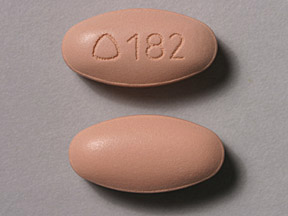Tarka Interactions
There are 825 drugs known to interact with Tarka (trandolapril/verapamil), along with 20 disease interactions, and 4 alcohol/food interactions. Of the total drug interactions, 168 are major, 590 are moderate, and 67 are minor.
- View all 825 medications that may interact with Tarka
- View Tarka alcohol/food interactions (4)
- View Tarka disease interactions (20)
Most frequently checked interactions
View interaction reports for Tarka (trandolapril / verapamil) and the medicines listed below.
- ActoPlus Met (metformin / pioglitazone)
- Ambien (zolpidem)
- amlodipine
- Aspirin Low Strength (aspirin)
- atenolol
- Celebrex (celecoxib)
- clonidine
- Crestor (rosuvastatin)
- Cymbalta (duloxetine)
- Dilaudid (hydromorphone)
- Fish Oil (omega-3 polyunsaturated fatty acids)
- hydralazine
- hydrochlorothiazide
- Lexapro (escitalopram)
- Lipitor (atorvastatin)
- Lyrica (pregabalin)
- metformin
- Nexium (esomeprazole)
- pravastatin
- prednisone
- sertraline
- simvastatin
- Synthroid (levothyroxine)
- trazodone
- verapamil
- Vitamin D3 (cholecalciferol)
- Wellbutrin XL (bupropion)
- Xanax (alprazolam)
- Zoloft (sertraline)
- Zyrtec (cetirizine)
Tarka alcohol/food interactions
There are 4 alcohol/food interactions with Tarka (trandolapril / verapamil).
Tarka disease interactions
There are 20 disease interactions with Tarka (trandolapril / verapamil) which include:
- angioedema
- bone marrow suppression
- hemodialysis
- hyperkalemia
- hypotension
- aortic stenosis
- bradyarrhythmia/AV block
- cardiogenic shock/hypotension
- coronary artery disease
- liver disease
- ventricular tachycardia
- cirrhosis
- accessory AV tracts
- CHF/AMI
- hypertrophic cardiomyopathy
- liver disease
- renal dysfunction
- neuromuscular transmission
- renal dysfunction
- GI narrowing
More about Tarka (trandolapril / verapamil)
- Tarka consumer information
- Compare alternatives
- Reviews (5)
- Drug images
- Side effects
- Dosage information
- During pregnancy
- Drug class: ACE inhibitors with calcium channel blocking agents
Related treatment guides
Drug Interaction Classification
| Highly clinically significant. Avoid combinations; the risk of the interaction outweighs the benefit. | |
| Moderately clinically significant. Usually avoid combinations; use it only under special circumstances. | |
| Minimally clinically significant. Minimize risk; assess risk and consider an alternative drug, take steps to circumvent the interaction risk and/or institute a monitoring plan. | |
| No interaction information available. |
See also:
Further information
Always consult your healthcare provider to ensure the information displayed on this page applies to your personal circumstances.


